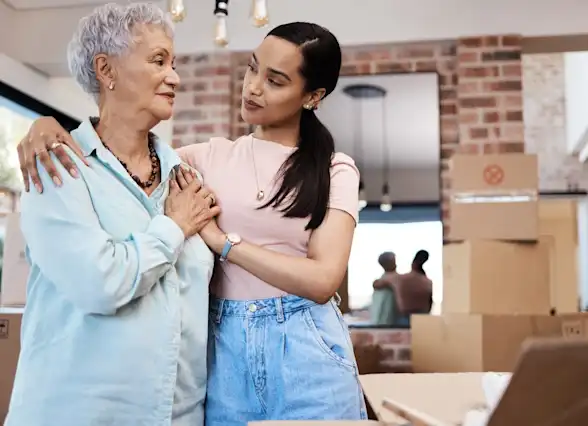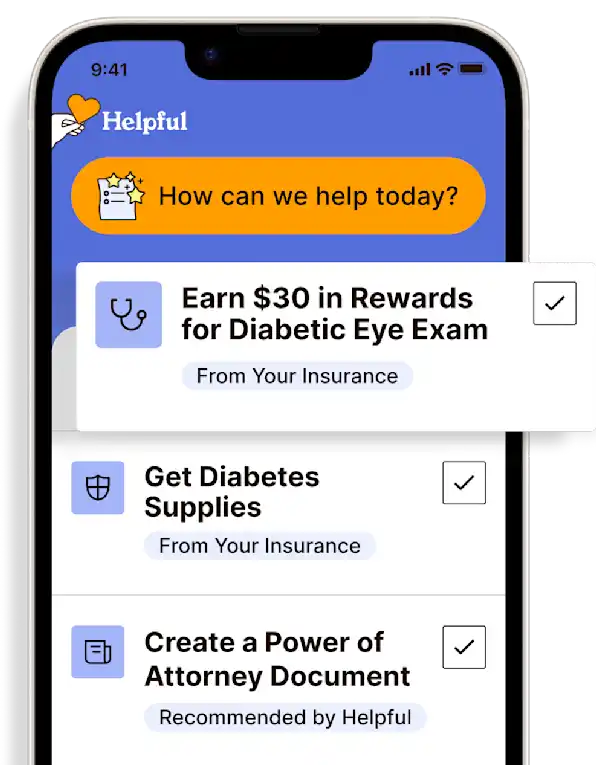Caregiving Challenges, Moving Your Loved One into Assisted Living
You have chosen the assisted living facility (ALF) and completed all the paperwork. Now, how do you prepare to actually make the move?
Get insurance benefits, legal documents, and medical records in one place

Helpful Highlights
Steps for moving your loved one after the decision to move has been finalized.
There are several essential things to be done before the move, on moving day, and after the move. Up to several weeks after the move, in fact.
You are integral to helping your loved one make this tremendous adjustment, and there are ways to make it easier for yourself, as well.
The ink is dry and it’s time to prepare for the move from your loved one's current residence to the ALF. Moving is one of the most stressful life events, causing almost as much anxiety and stress as the death of a spouse. It may be difficult. It may be a relief. Often, it's both. There may be some anger and resistance. There may be some indecision. Some may see the move as lightening their load, others may find the process excruciating. Be patient. It takes about a month for your loved one to start calling the ALF “home”, and that marks the transition as complete.
Before the move
If you don’t have to empty your loved one’s home immediately, keep their current residence intact for 30 days
Involve your loved one in setting a goal date to have the home empty.
If your loved one has lived in their home for decades, letting go may be extremely hard.
Moving everything out of their home can also be overwhelming. If it's too much to think about, they won’t think or do anything.
Work in one room at a time.
Try to do all the sorting prior to their involvement and then let them make the final decision on items/piles/groups.
Set aside items to be given to other family members.
Separate items to be donated.
Send all items that are broken and cannot reasonably or purposefully be fixed to the garbage. Include things that cannot be cleaned or are worn out.
It will give them comfort to know they can change their mind about what they want in the ALF… And they may change their mind often!
Keep some seasonal items available. Many older adults enjoy changing decor according to the season or specific month. Remember that - in addition to decor - sentimental, special, or expensive holiday-related ornaments and figurines are important to them. Keep those, too.
Get measurements of your loved one’s new living area to ensure the furniture they want will fit into the space.
After moving into the ALF, the furniture may still be too big or make the space cumbersome to navigate. After a week or so of adjustment, show them pictures of the remaining smaller furniture to see if they would like to trade it out.
You can also take your loved one back to the house to inspect the remaining furniture personally (rather than use pictures), though understand the visit can mentally and emotionally set them back.
Help your loved one pick out the things they want to take with them.
The more their private space looks like “home”, the quicker they transition.
Honor their visual sense of "home". When they see this recliner or table lamp and picture combination, it’s home. (Especially important for someone with dementia.)
Sometimes, you can coach your loved one through letting go of the “stuff” because they can hold on to the memories. Photo albums are a tremendous help with this! Give their favorite memory pieces to family members and take pictures of them with those pieces in their own homes.
Complete the pictures with descriptions you've written about them.
“This teacup was my grandmother’s, she brought it over from Russia in 1916. I gave it to my great-granddaughter, Hope."
“My mother got this plate when she lived on the military base in Hawaii in 1949. She always used it for birthday cakes and celebration dinners. I gave it to my daughter, Jeannie."
“This pencil drawing is of my grandfather’s farmhouse from the 1920s. They published this drawing in the local paper when he opened the dairy portion of the farm. I gave this to my grandson, Jason."
"Our neighbor, John, always admired these handcrafted bird feeders my husband put in our side yard. John lives at Sunrise Retirement Community now and I gave these to him to put outside his picture window there."
Share with your loved one how grateful that family member or friend is to have the treasure that was given to them.
Your loved one will enjoy sharing these photos and stories with the other ALF residents, and you will enjoy sharing them with your loved one should their memory start to fail.
Moving day(s)
If you feel the process may be a painful one, consider having your loved one stay with a family member while their possessions are moved.
Dedicate for large items and boxes to be moved (1-2 days, likely).
Try to get everything moved in and have everything set up at the ALF before your loved one comes. Include their clothes and personal items.
Try to organize furniture and their personal things the way they prefer (what they're used to).
Do not get all new furniture and other household items. While this may seem like a nice idea, it is better to keep the familiar and comforting items - like that worn-in recliner and that old, ugly lamp. If your loved one wants fresh, new items, let them tell you that.
Hang as many of their items on the walls as possible and as allowed. This will make the space feel like home, but will not take up precious floor space.
If your loved one has a kitchenette in their ALF apartment, make sure their favorite snacks and drinks are stocked. After the move, you can spend some time together sharing these and talking.
After the move
Remember that this is a major life change for your loved one and they may have shifting emotions and unpredictable reactions.
For at least the first month or so, make it a priority to visit daily, even if only for 10-15 minutes.
Take turns visiting, one family member can visit each day and you can encourage friends to visit, too. These visits will reassure your loved one, as well as help them immerse in the ALF community.
During the visits, each person can look for ways to help your loved one get involved in the ALF community (reviewing the activities calendar, signing up for off-campus trips, spontaneously starting conversations with other residents, or even just frequenting the common areas).
The sooner your loved one gets involved and makes friends, the quicker and smoother the transition will be for all of you.
Note that if daily visits seem to be upsetting your loved one, however, talk to the ALF staff. Sometimes they will recommend staying away until your loved one is more settled before you visit.
Reassess your loved one’s living space in a few weeks. Make sure they have the items most dear to them, placed where they want them.
Once your loved one refers to the ALF as “home”, you can begin the discussion of emptying the home they left.
Don’t forget! Notify applicable businesses (post office, banks, physicians, etc.), as well as family and friends, of your loved one’s new address.
Write the new address and post it on the inside of the door for your loved one as a reminder.
Don’t be surprised when your loved one thrives at the ALF. Don’t be surprised if they say they wished they moved there earlier! Oftentimes, eating and socializing with others increases mental and physical health. It certainly promotes emotional well-being. In addition, they have someone to help them 24 hours a day, so the stress of living alone is gone. You can be the daughter or son again, rather than the caretaker, and enjoy time together just loving them as no one else can!
No content in this app, regardless of date, should ever be used as a substitute for direct medical advice from your doctor or other qualified clinician.
Get more support and guidance on insurance benefits, medical records and legal forms.
Helpful brings together your insurance benefits, legal documents, and medical records in one personalized place — so you always know what you have, and never have to search again.

Simplifying Healthcare, Supporting Mental Health
An all-in-one solution to help navigate the complexities of healthcare and support for mental health, for you or your loved one.





